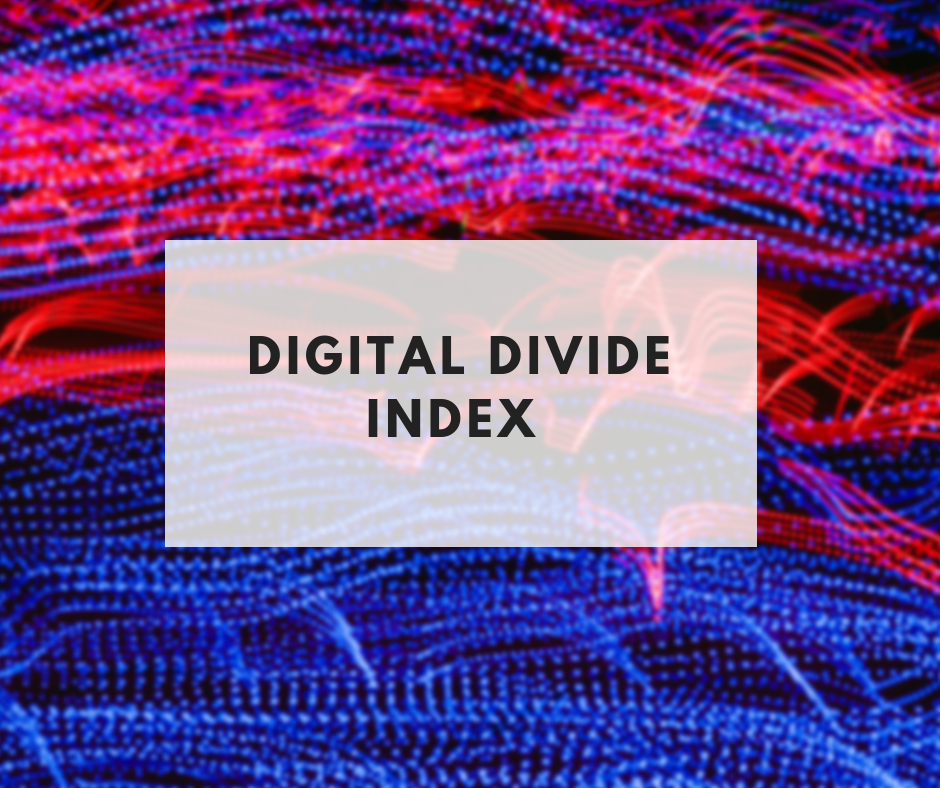I came across the Digital Divide Index (DDI) project on Purdue University’s Center for Regional Development website. Noting in the overview that “the digital divide is the number one threat to community economic development in the 21st century”, the project attempts to define the problem (through the calculation of the DDI) using 5-year American Community Survey and FCC Form 477 data.
The methodology section does a great job of reviewing how the Digital Divide index is calculated, but here is a “cut and paste” from the overview of the key measures:
The Digital Divide Index or DDI ranges in value from 0 to 100, where 100 indicates the highest digital divide. It is composed of two scores, also ranging from 0 to 100: the infrastructure/adoption (INFA) score and the socioeconomic (SE) score.
The INFA score groups four variables related to broadband infrastructure and adoption: (1) percentage of total 2010 population without access to fixed broadband of at least 25 Mbps download and 3 Mbps upload; (2) number of residential broadband connections with at least 10 Mbps download and 1 Mbps upload; (3) average maximum advertised download speeds; and (4) average maximum advertised upload speeds.
The SE score groups four variables known to impact technology adoption: (1) percent population ages 65 and over; (2) percent population 25 and over with less than high school; (3) individual poverty rate; and (4) percent of noninstitutionalized civilian population with a disability.
